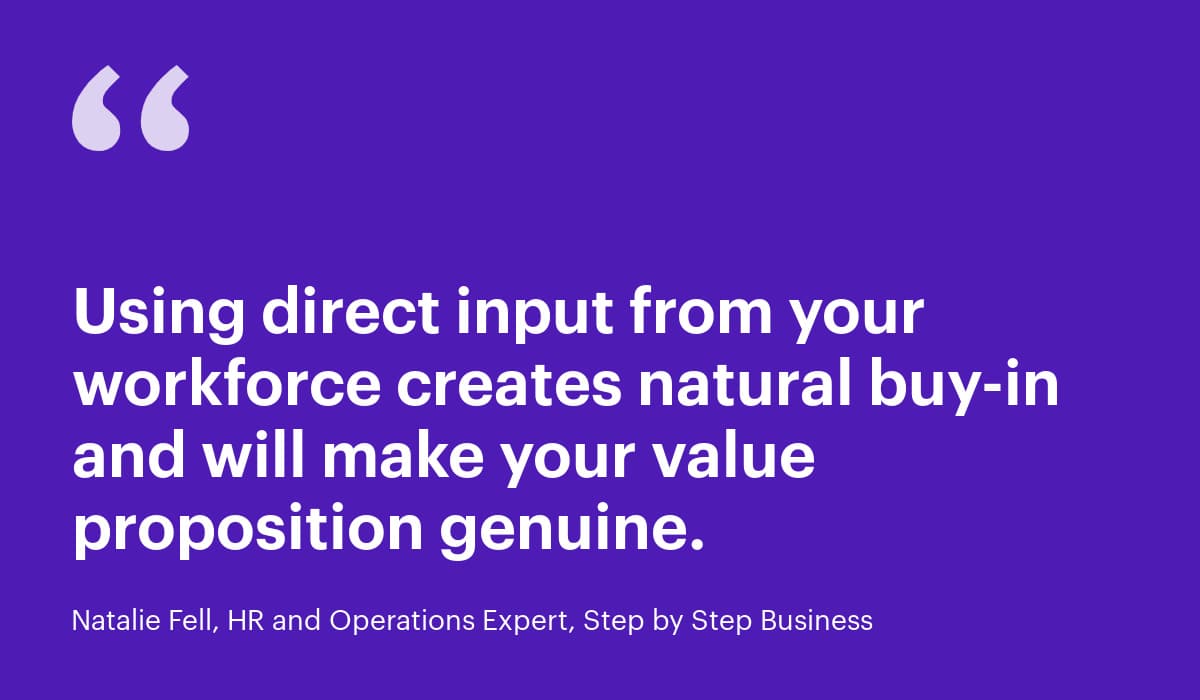Employee Value Proposition: What It Is and How to Develop and Use It Effectively
Employers need a good employee value proposition to stand out in the market. This article explains what it is and how to develop it.

An employee value proposition (EVP)—if effective—can make an employer stand out in a competitive hiring market. First, let’s define what this means. The marketing term “value proposition” refers to the value that companies and their products and services offer customers and potential customers. In HR circles the term “employee value proposition” refers to the value that companies have to offer current and potential employees.
Effective EVPs help employers stand out
While many employers may historically not have given their EVPs much thought, today they can’t afford not to. Gaining clarity around their EVPs—the reasons why they would be the best choice for potential employees—can help them stand out from the competition. In an increasingly competitive and global hiring environment, employers need to ensure that they are articulating key points that will resonate with employees both verbally and through their actions.
A good starting point for identifying the elements to include in your employee value proposition is your culture and your mission, vision, and values. These are formal statements that convey what your company believes in and aspires to. To be most effective, ensure the validity of these statements and determine whether employees value them.
Value from the employee perspective
Just as when crafting customer value propositions it’s important to truly and thoroughly understand what employees value.
Fortunately, employers have the audience poised to provide them with these insights: their employees!
A simple poll or survey provides employers important information about what employees value most. What keeps employees with the company? What attributes or traits do employees feel the company has that sets it apart from others? Gathering this input can serve as a good starting point for building a value proposition.
Gather input through focus groups with employees, suggests Natalie Fell, an HR and operations expert with 15 years of experience, now working at Step By Step Business, a site that helps people set up their companies. “Using direct input from your workforce creates natural buy-in and will make your value proposition genuine,” Natalie says.

Ask employees to rate your chosen attributes on a scale of 1-5 or 1-10, with 1 being low. Include an “other” category for them to add any attributes you may not have thought of. Their collective ratings will allow you to rank attributes from high to low, helping you hone in on some key points that could be woven into your EVP.
Example attributes:
Benefit package
Flexibility
Inclusive culture
Opportunities for input
Support for work/life needs
Focus on health and wellness, including mental wellness
Surveys done by other organizations can give you insights into what employees value, generally. You can then test these same attributes with your workforce. Visier, for instance, recently did a study on what Gen Z values.
Once you have a solid list, pick the top 3-5 attributes and translate them into benefits that will resonate with potential employees.

Translating features into benefits
Just as when writing sales copy, when attempting to influence an audience, it’s important to present information to them in the form of benefits, not just features.
For example, “benefit package” is a feature. Translating it into an impactful benefit requires thinking about the “so what” for employees. “Flexible benefit package with a wide range of options to meet individual employee needs,” for instance.
Here’s an example of an EVP from Motivosity, a company that provides employee engagement software for rewards and recognition programs: “Love what you do, serve always, and stay young.” “Motivosity was founded on a culture of these three values, and we live up to them every day in the workplace,” says Logan Mallory, a VP at Motivosity. “We developed it in careful consideration to be in full alignment with our company values, so that we could be sure that we’re building a team of people who truly care about the work they do, care about each other, and want to make the workplace a better place,” Logan says.
But what if the input you receive from employees indicates that you don’t have a lot that really stands out? While you can’t halt your hiring practices, what you can do is take steps to close whatever gaps may exist. It’s never a good idea—with customer or employee communication—to make statements about benefits that simply don’t exist. That’s a good way to drive dissatisfaction, low engagement, turnover, and a slowing stream of job applicants.
Once you do have a solid employee value proposition based on the reality that employees can expect to experience at your company, you can embed those principles into all of your recruitment and hiring communications and practices.
Using your employee value proposition as a guide for evaluating communications
“HR professionals, especially recruiters, can make excellent use of the employee value proposition at career fairs and hiring events, as it’s an easy ‘elevator pitch’ to use in conversations with potential candidates,” Natalie says. “It can also be used in recruiting marketing materials and serve as an overarching internal branding standard.”
As you promote job openings, engage with potential candidates during interviews, make job offers—and even during your onboarding programs—checking to make sure your EVP is front and center of your communication efforts will help to provide alignment and consistency.
People analytics can offer great insights into your EVP over time. Employers that actively collect and analyze workforce data can continually engage employees in understanding “what’s in it for you?” That data can help you extract insights to both engage and retain the talent you have, and attract new talent to your organization.
On the Outsmart blog, we write about workforce-related topics like what makes a good manager, how to reduce employee turnover, and employee burnout. We also report on trending topics like the Great Resignation and preparing for a recession, and advise on HR best practices like how to present headcount data to your CEO, metrics every CHRO should track, and connecting people data to business data. But if you really want to know the bread and butter of Visier, read our post about the benefits of people analytics.


